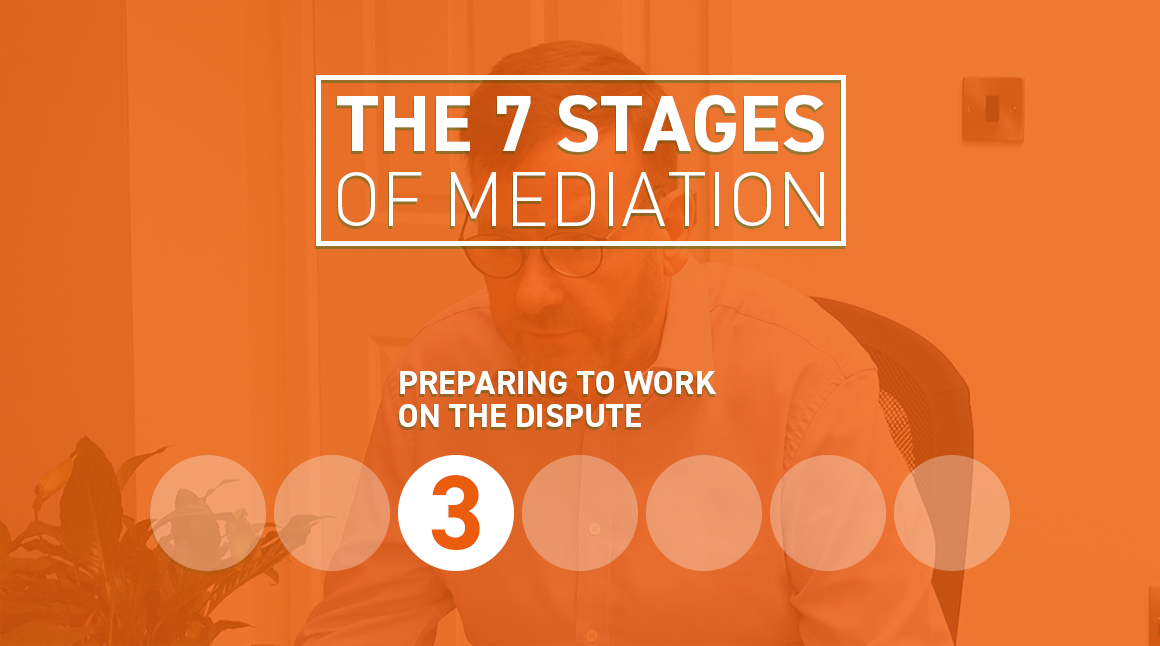
Posted on: August 4th, 2025

Over the last 26 years, UK Mediation has developed and honed our own 7-Stage Mediation Model for interpersonal disputes. Based on Dr Mike Talbot’s pioneering work, as well as experience gained from mediating thousands of cases, the 7 stages cover the entirety of a typical mediation day. This includes the individual meetings with each party, the joint mediation session, and finally the forming of the written agreement.
In this article, following the conclusion of the individual meetings, we move on to Stage Three…
The mediation process can be run in a variety of ways, to suit different people, organisations, and applications. As such, it is important for the mediator to take a moment and prepare themselves for how best to approach the joint mediation.
We can think about three aspects of preparation: preparing the mediator(s), the parties, and the venue.
The Mediators’ Preparation
First of all, you should decide whether to get the parties together for a joint session, or to use shuttle mediation, where the parties do not meet directly. Shuttle mediation can be particularly useful if the dispute is quite volatile, and can often be used as a precursor to a joint session.
At this stage, if you are working with a co-mediator, it is also useful to discuss your personal styles and strengths, clarify any points of fact with your partner, and plan how you will share tasks and roles.
The Parties’ Preparation
Parties may still be apprehensive about coming together for the joint session, despite the information and encouragement provided in their individual meetings.
To help, you should:
• Be clear about who is attending, and what their role(s) will be
• Offer reassurance and encouragement as appropriate
• Allow exactly the same privileges to both parties
Depending on the format, there may be a delay between the individual and joint meetings. In these cases, parties may find it beneficial to receive some additional information about how the face-to-face session will work, and be given the opportunity to contact you if they have any concerns.
Preparing the Venue
The location also plays a big part in a successful mediation case. The venue should be neutral, accessible, and comfortable, and if delivered within an organisation, should be away from parties’ usual working environments.
Extra rooms should also be available (even though they may remain unused) for side meetings and breaks. Also consider people’s needs for refreshments, as well as special requirements they may need (sensory impairment, access requirements, etc.)
Likewise, if the mediation is being delivered online, make sure that you and the parties are in quiet locations where you won’t be disturbed or overheard by others, and ensure that the parties have been sent the correct links and timings.
Seating Arrangement
Some thought also needs to go into how the parties are seated in relation to each other. We recommend an offset position, where parties can easily interact if they wish, but where they do not feel compelled to meet the gaze of each other. Facing one another straight on is not recommended, as it feels too confrontational.
You can also try it without a table to encourage open communication but, if that feels too threatening, parties might prefer the security of a table to sit behind.
Finally, they should be far enough away from each other that they don’t feel threatened or crowded, but not so far that they have to raise their voices.
Once preparations are complete, we can now bring the parties together for a joint session in Stage Four...